Medieval Navan
Medieval Navan
by Ethna Cantwell
___________________________________
This article traces the first 500 years of Navan's history, from its origin over 800 years ago to the Cromwellian upheavals in the mid 17th century, essentially the time of the dominance of the Nangle family in the town.
In 1169 the Norman Invasion of Ireland began. The High King Rory O'Connor called it "The arrogant tresspass" [1], and indeed he wasn't exaggerating.
The Norman Invasion changed the landscape and social organisation forever in Ireland. A predominantly rural landscape of ringforts and tuaths and pastoral farming was replaced by manors and villages, with with broad fields tilled in strips; castles and abbeys appeared, and walled towns sprang up everywhere. The only urban centres in pre-Norman Ireland were Viking ports like Dublin and Drogheda, and monastic centres like Clonard and Kells.
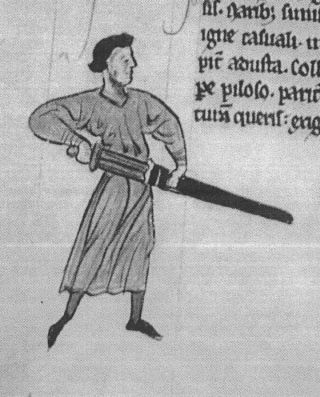 Hugh de Lacy (Fig 1) created the urban landscape of Meath, with his capital in Trim, his port at Drogheda, and established urban centres like Navan, Duleek, Kells and Athboy. And he did so with incredible speed. In 1186, barely 17 years after the Normans first landed in Wexford the Annals of Lough Cé recorded - "Meath from the Shannon to the sea is full of castles and foreigners." [2]
Hugh de Lacy (Fig 1) created the urban landscape of Meath, with his capital in Trim, his port at Drogheda, and established urban centres like Navan, Duleek, Kells and Athboy. And he did so with incredible speed. In 1186, barely 17 years after the Normans first landed in Wexford the Annals of Lough Cé recorded - "Meath from the Shannon to the sea is full of castles and foreigners." [2]
In 1172, Henry II granted the ancient Kingdom of Meath to his knight Hugh de Lacy. Under the feudal system, de Lacy divided his Liberty of Meath (a quasi independent political unit which had its own law courts and sherrif) among his closest allies, his Barons. These large areas are called Baronies. They often approximated to the political divisions of pre -Norman Meath, the Tuatha of the old Gaelic chieftains.
Fig.1. Hugh deLacy
There are about 11 baronies in Co.Meath - Navan, Skryne, Morgallion, Lune, Ratoath, Fore, Slane, Kells, Moyfenrath, Dunboyne and Deece.
DeLacy's barons owed him service, generally the service of 5 knights. One knight's service was financed by 20 ploughlands - 1 ploughland approximated to 120 modern acres. The baron, in turn, subdivided his barony into Manors, which he granted to his knights. Athlumney and Ardmulchan are examples of these manorial settlements - both in the Barony of Skryne. DeLacy himself was granted the Liberty of Meath for the service of 50 knights.
DeLacy granted the land between the Boyne and the Blackwater to his ally Jocelyn deAngulo. The contemporary poem "The Song of Dermot and the Earl" tells us- "...to Jocelin he gave the Navan and the lands of Ardbraccan..." [3]
Navan, therefore is a Norman town, approximately 840 years old. There is no evidence that an urban settlement existed before Jocelyn deAngulo founded the town. It was strategically located at the confluence of the Boyne and the Blackwater close to the location of a substantial abbey of the Canons Regular of St. Augustine founded about 30 years earlier.
DeAngulo decided to set up the town soon after the Conquest, to encourage settlers and give them the privileges of townsmen by charter. [4] In so doing, he established his barony with a centre of trade.
The most important privilege conferred on a town by its charter was the right to self government. Navan got a Portreeve or chief citizen from its charter, also 12 Burgesses, and the right to send 2 members to represent the town in the parliament in Dublin. In the 16th century, where records exist, Navan's representatives were dominated by the Warren or Waring family. [5]
The Portreeve was a magistrate, elected annually on the 13th Sept. by the Corporation at large. The Burgesses were chosen by the Freemen as vacancies occurred, the Freemen themselves being only admitted by the favour of the Corporation - the Freemen had the coveted privilege of not having to pay taxes or tolls to the Corporation.
Over time, DeAngulo's name became anglicised as Nangle, and the Nangles were to be the Barons of Navan for the next 500 years. The descendants of these first settlers and those who became part of the town life from the surrounding countryside [6] ran the town until they were displaced by the Prestons in the Cromwellian dispossessions after 1654.
The early Barons built defensive mottes and baileys to consolidate their newly acquired territory against attacks by the native Irish. DeAngulo built his defensive motte on a natural gravel ridge at Moatlands overlooking the River Blackwater. It probably would have had a wooden tower at its summit. The bailey where the lord and his entourage would have lived was located behind the motte. The drawing (Fig. 2) shows the mound as it appeared to Gabriel Beranger in 1775. Today the deep ditch has disappeared, and the mound appears to have changed shape as indicated in the photo (Fig.3) taken in 2004.
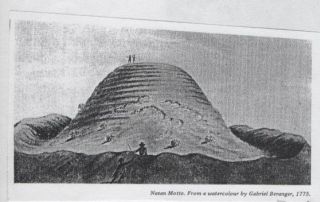
Fig. 2 (above) Navan Moat in 1775
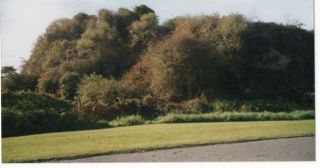 Fig. 3 (above) The Moat in 2004
Fig. 3 (above) The Moat in 2004
Later the Nangles built their castle at Ardsallagh. This ancient castle was demolished by the Duke of Bedford in the 1840s, and a Tudor style mansion was built in its place.
Navan was a small town. Its 3 medieval streets were Trimgate St., Watergate St. and Dublingate St. (Ludlow St.), which formed a Y shape and which met in the Market Sq. These werre surrounded by defensive walls. Although it was walled and fortified, it never became an important fortress town.
The Water Gate was south of Poolboy Bridge over the Blackwater; the Trim Gate was near the present Community Centre and forms part of the wall behind the bar in Ryan's pub. (Fig 4) and the Dublin Gate was in Ludlow St. near where the Newgrange Hotel stands today. The most significant section of Navan's town walls which remains today can be found in the County Council yard in Abbey Road. (Figs 5 and 6), where part of a bastion tower can be seen. (This area was called Sandymount). The walls would appear to have run in a curve along the north side of Trimgate St. towards the Fair Green and along Abbey Road and Sandymount to the old Bridewell at Poolboy Bridge. [7]
A tax was levied for the upkeep of the town walls. In 1462 the Irish Parliament ruled that Navan could continue to collect the murage (tax) levied in the time of henry VI 1421-66).
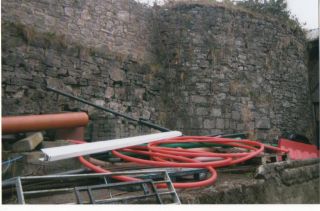

Figs 5 and 6 Part of Navan Town Wall Abbey Rd.
Off these 3 main streets were a series of narrow lanes. These include New Cornmarket, the Shambles (meat market) Toberaurum (the only substantial well within the town's walls in the middle ages), Old Cornmarket, Bakery Lane and Metges Lane. We can imagine a town of low wooden or mud walled buildings with thatched roofs, and the narrow lanes filled to overcrowding with these little cabins, in which lived the native Irish. There was no sanitation, open sewers would have run down the streets, and under these conditions, diseases like cholera and the plague would have been commonplace.
Economic activities typical of a town of the Pale at this time would include bread making, brewing, tanning, milling, carpentry and iron working ( a smithy - essential for the manufacture of horse shoes, ploughs, nails, cartwheels and the like), and also spinning and weaving as cottage industries.
In the early years after the Norman Conquest we can assume that Norman French would have been spoken in the town, which was gradually replaced by English. [8] Irish survived here too, especially among the poor. Irish placenames like Boreen Keel (Bóithrín Caol or narrow road) and Butterstream (Bóthar Sirriam - the Sherrif's Road on the way to Dublin) still remain.
A strong Gaelic presence among the population of the town is indicated by the large numbers of Irish names in the town in the early 16th century, and a number of Irishmen holding the position of mayor in the 1520s and 1530s, include Patrick Manne and John Dowding. [9]
In the early Norman town archery practice wouldhave been the norm - compulsory in most towns. In 1466, it was the law that every English speaking male between the ages of 16 and 60, whether Irish or English, was to have a bow equivalent to his height, and a quiver of a dozen arrows. Mastery of the longbow took years of practice, and such skills were necessary as a defence against the forays into the town of the native Irish like the O'Reillys of Cavan and the MacMahons of Monaghan. [10}
We can assume too the presence of shops and taverns. In 1469, Martin White, the Abbot of the Abbey was in dispute with James Porter, the Archdeacon of Kells as to who should control the parish of Ardbraccan. The Archdeacon alleged as part of his case, that "divine worship was neglected in Navan, the number of canons was falling, and that they were rambling about frquenting the taverns and leaving the buildings to go to ruin." [11}
Narrow strips of land ran back towards the town walls. These are called Burgage Plots which were rented out on a yearly basis. The outlines of these medieval burgage plots can still be seen in the photo (Fig.7) taken during the 1960s, as they run back from Trimgate and Watergate Streets towards the line the town walls would have taken.
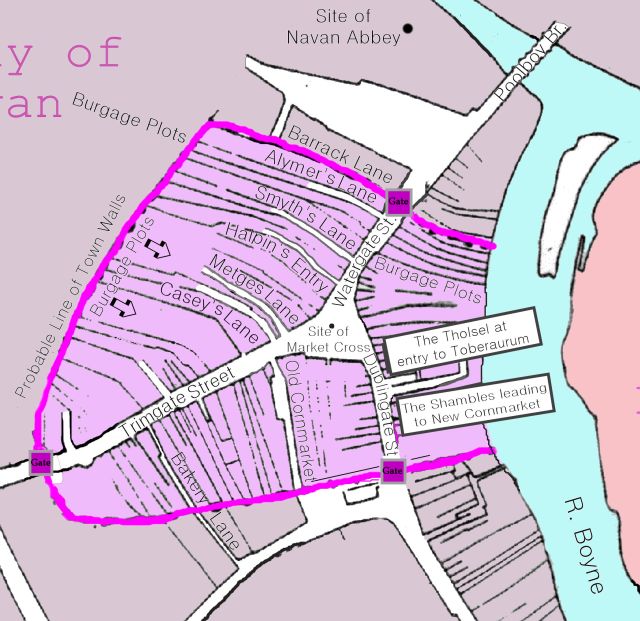
Fig. 8 Map of the Medieval Navan
It is important at this point to mention Navan Abbey. It stood outside the town walls, close to the confluence of the Boyne and the Blackwater. The map (Fig.9) is from William Petty's Down Survey of 1654, and it gives us a sense of the location of the Abbey close to where the 2 rivers meet at Poolboy Bridge, (Navan Bridg as it is called on the map). The Abbey was dedicated to Our Lady under her title of the Assumption. It would have acted as the parish church for the town and indeed the graveyard for its citizens for 400 years. Its legendary statue of the Blessed Virgin brought pilgrims from beyond the Pale, attracted by stories of miracles worked in its presence.
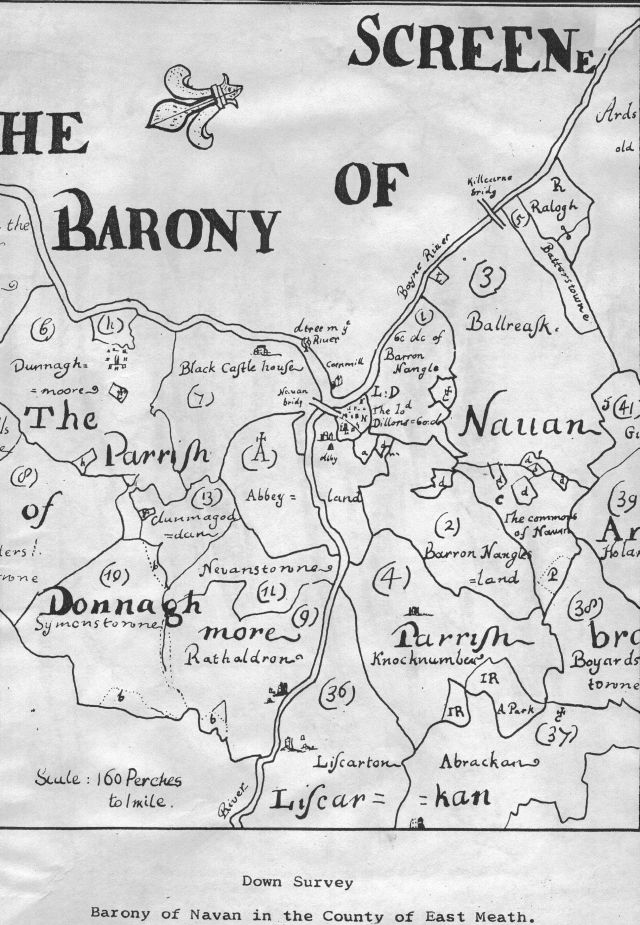
Fig. 9 Map from the Down Survey 1654
It was founded around 1142 when Tiernan O' Rourke, Lord of Breffni and temporarily Lord of Meath, granted the land upon which it was built to the Canons Regular of St. Augustine. He granted it Abbeylands, Faughan Hill, Deranstown and from Leighsbrookas far as Dowdstown, (the monastery owned all these lands until its dissolution in 1539), and gave it its charter which spelled out the the land income which would sustain it. The font (Fig. 10) with its Romanesque design would date from this pre Norman period, and can be found today in the Oratory of St. Patrick's Classical School Navan. [12]
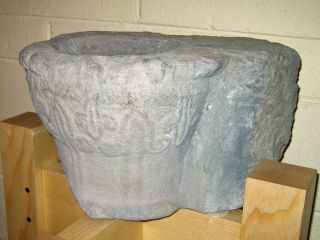
Fig.10 Pre -Norman Font with Romanesque designs
Jocelyn de Angulo further endowed or re-built the abbey. It must have been a prominent feature on the landscape as the town developed. A copy of its charter (of 1189), which had been made in the great room below Ardbraccan in 1498, and held in the Public Records Office in London, was rendered virtually illegible in 1942 as it was used to extinguish a fire caused by German bombers during the Blitz. [13]
But 17 pages of a 13th century Martyrology remain. (Figs 11a,b and c) to be found today in the Bodleian Library at Oxford University. It contains hand written notes and obits naming bishops and abbots written in its margins by different hands over the following three centuries.
One of the best known characters of medieval Navan was an abbot from England, John Bole (locally called John Bull) who rebuilt the abbey in the 1450s. He later became Archbishop of Armagh. In 1453 pope Nicholas V granted an indulgence (probably requested to do so by John Bole ) "to all the faithful...who...visit the church and give alms for the repair and conservation of the buildings...of St. Mary's Navan, which have been impoverished by wars etc."
John Bole got Letters Patent from the King in 1454 "taking into protection all people, whether rebels (native Irish) otherwise who shall go on pilgrimage to the Monastery of the Blessed Virgin at Navan." [14]
A story has been told concerning a feud over the rights to the parish of Kilberry between a Dr. John Stackpoole of Navan Abbey and a Sir Thomas Bathe. Sir Thomas bribed a servant to accuse Dr. Stackpoole of treason, and had his goods confiscated and he himself sent to England for trial,where he was found not guilty. Bathe refused to make restitution and Dr. Stackpoole appealed to the Pope "being in despair of any remedy of the extortion, violence and oppression of Bathe."
The Pope wrote to the Bishop of Meath then living in Ardbraccan, to excommuniate Bathe. The Bishop did so publically before "ye Market Cross on ye Fair Day." Bathe responded by kidnapping Dr. Stackpoole to Wilkinstown, where his eyes were put out and his tongue slit. Stackpoole was carried back to the Abbey "cast before the Blessed Virgin, and by her grace, mediation and miraculous power, he was restored to his sight and his speech." [15]
Carved stonework from Navan Abbey was uncovered when part of the wall of the old Cavalry Barracks was knocked down during the construction of the Inner Relief Road in 1976. The high gothic decorations on the stones would indicate that they date from the improvements undertaken by Abbot John Bole in the mid 15th century. Today, these can be seen in the Millennium Garden on the Fair Green side of the St. Mary's Church.(Fig. 12)
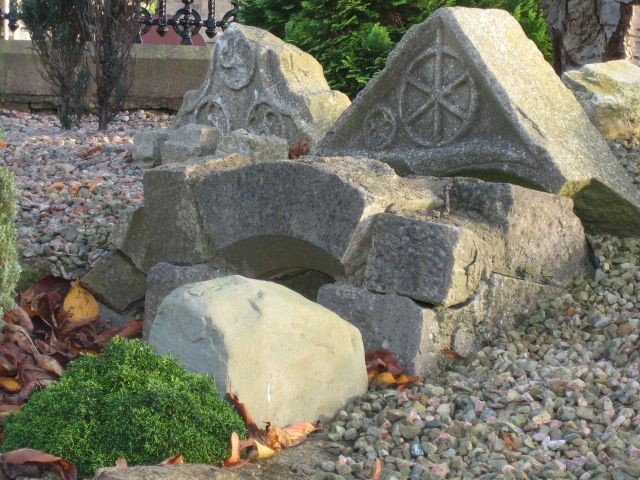
Fig 12. Carved masonry from Navan Abbey (mid 15th century) Photo N&DHS
Dean Cogan records witnessing an old man picking up a skull when planting cabbage in the garden of the barracks and in 1874 the remains of 9 people were found when sinking a pump in the barracks yard. In the mid 1970s, during the laying of sewage pipes at Abbeylands, human remains were found in a trench.
This then was the cemetery of the Abbey, and presumably of the people of Navan at this time. The cemetery was uprooted and turned into a garden during the consruction of the Cavalry Barracks on the Abbey site in the early 18th century, and the tombstones were used as paving and flags for the barrack yard. [16]
We are fortunate to have a description of some of the more notable monuments in the Abbey from the report of Bishop Anthony Dopping on the state of the churches in Meath at the end of the 17th century. He describes the monument to Archbishop Bole, and records inscriptions in "ye body of ye church...Edmund Manning of ye Novan and Margaret his wife, caused this monument to be made in memory of Patrick Manning and his wife Ann Travers (Father and Mother to ye said Edmund) and Mary Warren his first wife who are buried towards ye pulpit...God receive ym to ye joys of bliss. Amen. Ye 19th Feb 1616."
Edmund Manning was a Burgess in the town under the Charter of James l. He was tried for attending mass said by a Fr. Richard Mysset in 1615. The jury in Dublin was imprisoned for acquitting them. It would appear that he was the man responsible for the building of the Tholsel or Market House in 1632.
The last inscription quoted by Dopping is entirely in Latin and reads " Here lies John Nangle, who for Adam's sin ate bread in the sweat of his brow, and also Johanna Nangle and their children who fell asleep after his death." [17]
However the tombstone of John Bole (a carved effigy of a bishop with a mitre and crosier) was saved from destruction by the soldiers in the cavalry barracks by the Rev Mervyn Archdall (the Rector of Slane) and Col. William Burton Conyngham. Today it can be seen in the wall of of the courtyard of Slane Castle, (Fig. 13) while its base, with carved figures of Christ on the Cross, and on its sides the twelve apostles, can be found near St. Erc's Hermitage Slane. [18]
The 15th century octagonal font from St. Mary's Abbey (Fig.14) is tooday in St. Mary's Church of Ireland Navan.
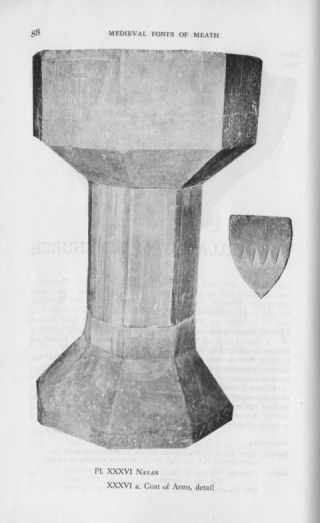
Part of the Abbey's lands contained a "Horling Park". Medieval hurling was obviously played with some vigour and was banned by a Synod of Bishops in Armagh in 1386, which called it a " reprehensible game...(causing) .. mortal sins and beatings and often homicides." [20]
Navan during these early centuries was essentially a market town serving its townspeople and its surrounding rural hinterland. The fact that it lies at the confluence of the Boyne and Blackwater encouraged trade, because the Boyne, and particularly the Blackwater, were lined with mills, and because of the possibility of water transport.
The old Tholsel (Toll House or Market House) stood near the entrance to the Toberaurum, and was the centre of the town's trade. It was described by Isaac Butler as "...a low mean building...a large weekly market held here on Wednesdays with four fairs in the year. It was formerly noted for one of ye best markets in Leinster for cattle and grain. Ye Dublin butchers had this for their common market before Smithfield was built." [21] it was demolished around 1800 and the old courthouse was built on its site. A carved stone preserved inside the building today states "Edmund Manning was overseer of this work in the year of Our Lord 1632".
Fig, 14 Medieval font Navan Abbey (15th cent.)
Navan's stocks (Fig. 15), used to humiliate petty criminals stood outside the Tholsel, and today can be found in front of the Town Hall in Watergate St.
In 1469, during the reign of Edward Vl Navan was granted its first Charter of Incorporation. This authorised the Burgesses to tax all incoming goods. The principal income to maintain the walls and provide municipal services like maintaining pavements, came from these taxes. Products liable for tax were local corn, leather , salmon from the monastery weir and eels from the traps; luxury imports like wine from France (via Drogheda) shellfish from Mornington, mussels, oysters, walnuts, salt, pepper and mustard. [22]
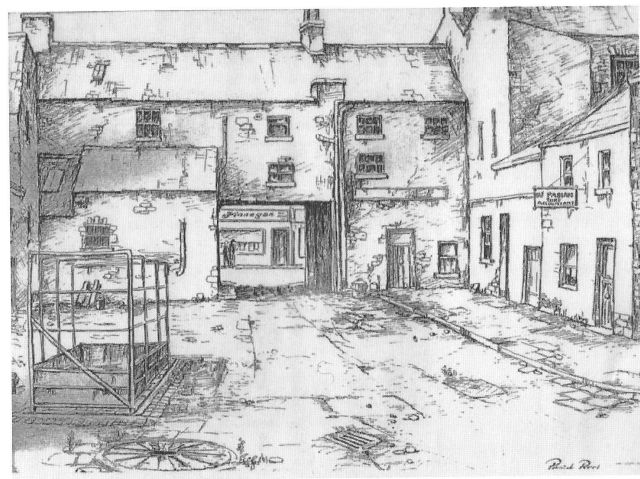
Fig.16 Old Cornmarket Navan (reproduced with kind permission of Patrick Reel)
Up until 1570, when an Act was passed establishing standard measures for corn, each town had its own measure. For example, the cwt in Kells was equal to 120lbs, while in Navan it was 112lbs. [23] Pictured above is the Old Cornmarket (Fig. 16) which links the Fair Green with Navan's Market Square, and which, within living memory, contained a weighing scales for weighing corn and beside this, an open forge.
The Market Cross stood in Market Square. it commemorated certain members of the Nangle family, Barons of Navan. A fragment survives, enopugh to place it as one of the tall pillar crosses (Fig. 17) erected n Meath at this time. It has very recently been returned to Navan by the National Museum and is now on permanent display in the Solstice Arts Centre. It is dated c.1585 and has 4 carved sides. It was discovered by W.F. Wakeman a member of the Royal Society of Antiquarians who relates how he found the stone built into a wall in "a miserable back lane branching from Trimgate St." [24] He was allowed to remove it.
The cross was erected by Martin Nangle whose sister married Nicholas Herbert (whose family came from Kildare) and the coats of arms of these families are linked on one of the sides of the Cross. [25]
 The side shown in Fig. 18 commemorates "Josulinus de Angulo the first Baron of Navan". On the side shown in Fig. 19 the name Nangle is clearly seen along with a crest showing the arms of the Nangles of Navan (Lozenge/Diamond) and the Dowdalls of Athlumney (5 birds - Martelets or Doves) and the Herberts (3 Lions Rampant). In Fig. 20 under the lady in the Elizabethan dress is Phillipus followed by an insised N with a lozenge on each side- signifying the Nangle Family arms. The inscription reads "Philip formerly Baron of Navan - a market placeand a market or fair day. " This probably relates to a new grant of Meath lands in 1215 by Walter de Lacy (son of Hugh) to Philip whose father and grandfather had been depprived of the lands for rebellion. The inscription indicates that the right to hold fairs was probably included in the grant.
The side shown in Fig. 18 commemorates "Josulinus de Angulo the first Baron of Navan". On the side shown in Fig. 19 the name Nangle is clearly seen along with a crest showing the arms of the Nangles of Navan (Lozenge/Diamond) and the Dowdalls of Athlumney (5 birds - Martelets or Doves) and the Herberts (3 Lions Rampant). In Fig. 20 under the lady in the Elizabethan dress is Phillipus followed by an insised N with a lozenge on each side- signifying the Nangle Family arms. The inscription reads "Philip formerly Baron of Navan - a market placeand a market or fair day. " This probably relates to a new grant of Meath lands in 1215 by Walter de Lacy (son of Hugh) to Philip whose father and grandfather had been depprived of the lands for rebellion. The inscription indicates that the right to hold fairs was probably included in the grant.
The side in Fig. 21 shows a figure holding an hour glass and a winged figure, a possible representation of mortality and immortality.
In the past it was customary during funeral processions for the coffin to be carried around the Cross. The Market Cross was uprooted during Penal times, but it was still standing in 1602, when a government spy called Southerne reported "At the Market Cross of Navan among Sunday Services, I spied 2 friars in their habits openly going from house to house , the one a tall young strip, and the other a lusty old fellow." The friars denied the authority of King James, and the mob speaking Irish, sided with them. Southerne was forced to take to his heels. [26]
In 2011, the detail of the old Market Cross has been replicated beautifully in four bronze panels created by Orla de Brí and placed back in Market Square as part of the Co.Council's urban enhancement scheme for the Square amd Watergate St.
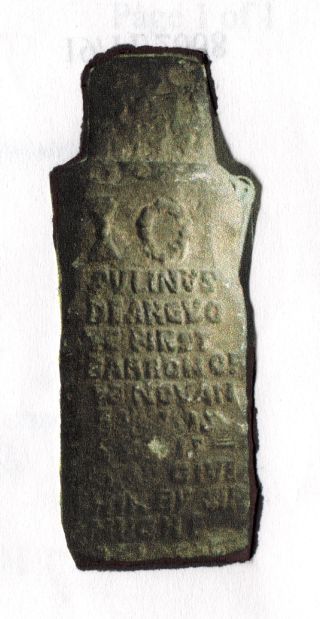
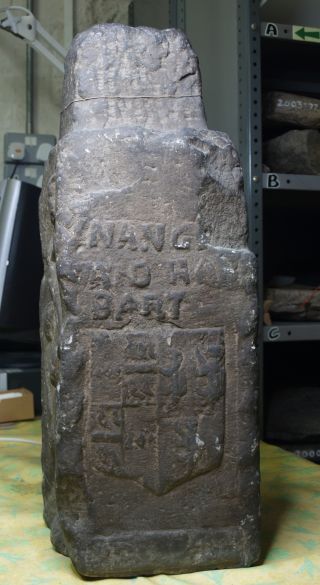
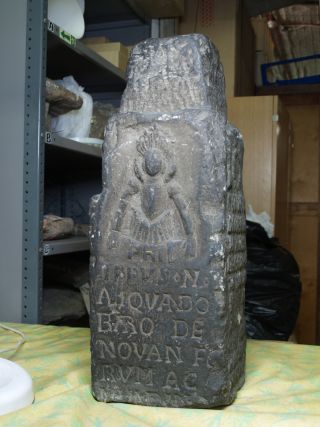
Fig. 18 Fig. 19 Fig 20
The year 1539 brought dramatic changes to Navan. In this year the northern Irish under Con O'Neill and Manus O'Donnell invaded the Pale and burned and looted the town "even ye cottages built in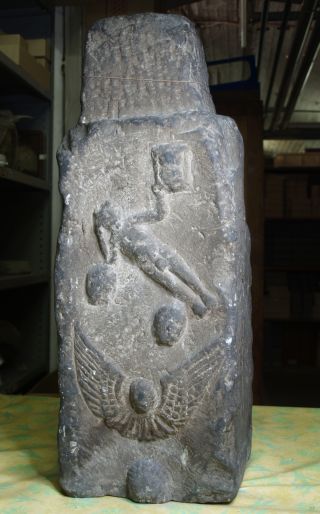
Fig 21
Canon Row" (which were outside the town walls) carrying off "spoils of gold and silver, copper, iron, and every sort of goods and valuables besides." [27]
It was reported baack to London that "The Navan is burned with all the appurtenances rifled, and the corn in the fields burned, and all the whole town which was the wealthiest and quickest English market town in that area."
Henry Vlll ordered that every ploughland in Meath should be charged 3s 4d for 4 years to pay for the rebuilding of the town walls after this devasting attack. This doesn't seem to have been a substantial re-build, as in 1598, Navan is grouped with Duleek as a market as opposed to a walled town. [29]
During the Reformation, Catholic monasteries were suppressed and their lands and wealth reverted to the Crown. On July 19th 1539, the Abbey in Navan was surrendered to the Commissioners of Henry Vlll by its Abbot Thomas Wafre. Only one of its 5 canons, John Betagh was allowed to remain, and served as parish priest of Navan on a pension of 20 shillings a year. The Abbey itself was spared from destruction as "the Monastery Church has from time immemorial been the parish church of Navan... the house ans other buildings were so ruinous and decayed that they are worth nothing. "
The Abbey lands of Navan were granted to John Wakely, a Protestant, and loyal to the KIng. He was in time elected M.P. for Navan, an indication of his control over the Corporation of the town. The town recovered its prosperity over time, being in the centre of a prosperous corn and wheat growing area and getting its wealth from markets and fairs.
Despite the Reformation and the surrender of the Navan Abbey, the Established Church (Anglican) , the Catholic faith survived in the town.
In 1548, nine years after the dissolution of the Abbey, the then Bishop of Meath, Edward Staples, who was working along with the State authorities to reform the Church, wrote to the Lord Deputy: " A friend of mine....(hearing) that I would preach the next Sunday at Navan...answered that they would not come there lest they should learn to be heretics ". Staples continues - "A beneficed man of my own promotion came to me weeping...' you were the best beloved man in your diocese, and now you are the worst beloved'.. - when Staples asked why this was so the man replied: "You have taken open part with the state, that false heretic - and preached against the Sacrament of the altar, and deny saints - you have more curses than you have hairs on your head, and I advise you not to preach at Navan, as I hear you intend to do...(as he)..feared more than he durst tell me." [31]
The Anglican Bishop Brady, writing to the Queen's Deputy Sir Henry Sydney in 1577, says "Masses be rife, little less than openly said, friars show themselves openly; two of them here at the Navan of late were apprehended by some of my men, but quickly rescued, and my men put in hazard of their lives; this was done by no less than the Portreeve or mayor of the town and some of his brethern." [32]
And in turn, Sir Henry Sydney, writing to Queen Elizabeth in 1576 - "Irish priests, or rather Irish rogues, having very little Latin , less learning or civility...live upon the alterages...which God knows are very small, and wont to live on the gain of masses, dirges, "shrivings" and such like trumphery, goodly abolished by Your Majesty." [33]
In 1622, Dopping, the Protestant Bishop, reported - " ye people meet in ye mass house which is in very good repair." It is not known where this Mass house might have been. The few Protestants in the town, he recorded, held their services in the Sessions House [34] which may have been the Tholsel.
In 1640, the Lords of the Pale, now called the Old English, were disaffected. They were excluded from involvement in government and persecuted in the practice of their religion. The final threat to their security came when the Lord Deputy, Thomas Wentworth began to question the titles under which they had held their properties since the Norman Conquest. They formed common cause with the Old Irish in Ulster. By the beginning of 1642 most of the country was in the hands of the rebels. (The Confederation of Kilkenny) The chief rebel in Meath was Lord Fingall. Thomas Nangle , the Baron of Navan was among the gentry who met on the Hill of Tara in 1641 to state their allegiance to the Rebellion.
The Rebellion of 1641 was the last hurrah of Norman Ireland when the Anglo Normans came together with the Gaelic Irish to rule the country for a short time before falling before the army of the Parliament of England under the Lord Protector Oliver Cromwell. Many of the old English of Meath lost their estates in the Cromwellian Settlement which followed the rebellion. This included the Dowdalls of Athlumney, the Cusacks of Geraldstown, Thomas Nangle of Navan, William Malone of Lismullin, James Bathe of Athcarne, Lords Gormanstown, Fingal, Dunsany and Patrick Barnwell of Kilbrew. Only these last four got their lands back at the Restoration; the rest lost them forever [35].
A small glimpse of how the Rebellion impacted on the town of Navan can be seen in the story of Roger Puttock, Vicar of Donaghmore, who was presented to the Rectory in Navan c. 1633. In Oct. 1641, during this time of turmoil, there was a general uprising against the Protestants in the town, and his house was sacked. He “was glad to flee with his wife and two children disguised, and to leave one child behind him”. The Portreeve and Burgesses supported the insurgents.[36]
Cromwell’s time (1649-53) was the dividing line between Norman Navan and modern Navan. Much of the Nangles’ land was confiscated under the terms if the Cromwellian Plantation. The Prestons, land speculators from Bolton in Lancashire, replaced them as the Barons of Navan, and from 1661 only Protestants appeared in the Corporation of the town. While the Cromwellian confiscations dispossessed in turn the descendants of the original “arrogant trespass” of 500 years before, and replaced them with a new class of landlord, the life of the ordinary landless citizen of the town went on as ever, unchanged and unchanging.
“…. Yet this will go onward the same
through Dynasties pass”
(Thomas Hardy)
~~~
You might ask at this point – What of Athlumney? – with its motte , 13th century church, and castle, whose tower house dates from the 15th century. Technically, Athlumney was not part of the medieval town of Navan. It is a manorial village of the northern boundary of the Barony of Skryne, where it meets the Barony of Navan at the River Boyne. Hugh de Lacy granted the Barony of Skryne to his knight Adam de Feipo, who in turn granted the parish of Athlumney in the Barony of Skryne to his relation Amauri de Feipo.
The Civil Survey of 1654 records watermills, a tuck mill, 2 fishing weirs and 2 open quarries here, akk if which have long since disappeared. Athlumney was not linked to Navan until the New Bridge was built in c.1756. This was the first bridge connecting the town of Navan to the east side of the Boyne. Although there was a ford at Athlumney, if you wished to cross the river dry footed, you would have had to travel two miles upstream to the 15th century bridge at Kilcarne, or three miles north to the even older 12th century Babes Bridge, which today has just one strong arch still standing of its original eleven.
~~~~~
[1] Geraldus Cambrensis, Expugnatio Hibernica, (Dublin 1978) p.69
[2] Annals of Lough Cé, Vol. 1, p. 173, (Dublin 1939)
[3] G. H. Orpen, The Song of Dermot and the Earl, (Oxford 1892) – translation from the Norman French if the 12th century poem.
[4] Navan had charters from Norman to Stuart times. The original sealed charters (the King’s Seal) would have been given to the town and enrolled in the Irish Patent Rolls. Unfortunately the earliest of these were destroyed in the fire in the Four Courts in 1922. The charters of James I (1624) and Charles II (1661) survive.
[5] Bríd McGrath, ‘County Meath Members of Parliament 1560-1613, in Ríocht na Midhe, Vol. IX, No. 2 1996.
[6] Norman family names include Cusack (Rathaldron), d’Arcy (Dunmoe), Tuites, Dullard (Dollardstown), Fleming (Slane), Duff (Dowdstown), also Plunkett, Taafe, Peppard, Hussey, Nugent, Bruton, Clinton, Cheevers and names with a Fitz prefix.
[7] Journal of the Royal Society of Antiquarians of Ireland (JRSAI) 1893
[8] Elizabeth Hickey, Skryne and the early Normans, (Tara, 1994), p.24
[9] Brendan Scott, Religion and Reformation in the Tudor Diocese of Meath, (Dublin 2006) p.25
[10] Margaret Murphy and Michael Potterton, The Dublin Region in the Middle Ages (Dublin 2010), p.270
[11] Rev. G. Rice, Articles on the History of Navan, Meath Chronicle, Feb / March 1981
[12] Notes from Rev. G. Rice, This font is carved in the Romanesque style and derives from the monastery of the Canons Regular of St. Augustine at Navan, founded about 1142. It was incorporated in the chapel of the De la Salle Brothers around 1900 – in an upper room in what had once been the Colonel’s house, (when a military barracks was built on the Abbey site about 1700). The font was presented by the O’Connor Family to St. Patrick’s Classical School in 1985.”
[13] Rev. G. Rice, Articles on the History of Navan, Meath Chronicle Feb/Mar 1981
[14] Rev. C.C. Ellison, ‘Some Aspects of Navan’s History’ in Riocht na Midhe, Vol. 3, No. 1, p.1
[15] Anthony Cogan, History of the Diocese of Meath Ancient and Modern (Dublin 1874), Vol. 1, pp. 224-5
[16] Cogan p. 228
[17] Rev. C.C. Ellison, p.3
[18] Cogan, p.228. Apparently, around the end of the 18th cent. A Colonel names Bishop, in a drunken mood, swore that “only one bishop would command here” and had the tomb smashed and fragments thrown into the R. Blackwater. It was saved by Col. William Conyngham and Rev. Mervyn Archdall a member of the Royal Society of Antiquarians. See also Elizabeth Hickey’s ‘The Bishop and the Stone’ in Riocht na Midhe, Vol. VI 1975
[19] Ellison, p. 17
[20] Ellison, p. 12, Isaac Butler, Journey to Lough Derg c.1744, copied from the original and published in The Journal of the Royal Society of Antiquaries of Ireland, Ser. 5, Vol. II, pp. 13-24, pp. 126-36, p. 440
[21] Rev. Gerard Rice, Articles on the History of Navan, Meath Chronicle Feb/Mar 1981
[22] Rev. C. Ellison, p. 11
[23] P.R.A.I. 1849. Hearing of 2 similar stones being used as supports for casks in a public house in Trimgate St., he used every endeavour to be allowed to make drawings of the and offered to pay for any trouble caused by removing the casks. He was at first “flatly and then insolently refused”. Dean Cogan describes the 2 stones “preserved by a family in the town,” although he does not name the family. One of them, he says “has an inscription in Irish commemorative of the sufferings of Christ … the other has a figure of St. Patrick with mitre and crozier on one side of which is S (saint) and P (Patrick); a second side has a shield and a figure of a bird… a third side hs the Ecce Homo crowned with thorns; and the fourth has a crowned figure of the Blessed Virgin with the Infant Jesus in her arms.” Cogan op. cit. pp. 229-30
[25] Ellison, p. 6-7
[26] Rev. G. Rice, Articles on the History of Navan quoting Calendar of State Papers James I
[27] Cogan, p. 223
[28] Ibid. p.228
[29] John Bradley, ‘The Medieval Towns of County Meath’, in Riocht na Midhe, 1988/89, Vol. VIII, No. 2, p.40
[30] An inventory of its possessions was made on 1st Oct 1540. There was a fortified tower called Newcastle (at the confluence of the rivers), a garden and orchard, 3 water mills, a salmon weir a meadow called the ‘horling’ park, and several hundred acres of land. The Abbey also owned a number of houses built c. 1520 in Canon Row, the street presumable getting its name from the route taken by the monks (or canons) walking into the town.
[31] Cogan, Vol 2, pp.16-17
[32] Rev. G. Rice, Articles on the History of Navan
[33] Cogan, Vol 2, p. 19
[34] Rev. C.C. Ellison, p.2, Dopping’s Visitation
[35] Rev. Gerard Rice, Norman Kilcloon, (Kilcloon, 2001) p. 159
[36] Ellison, p.2